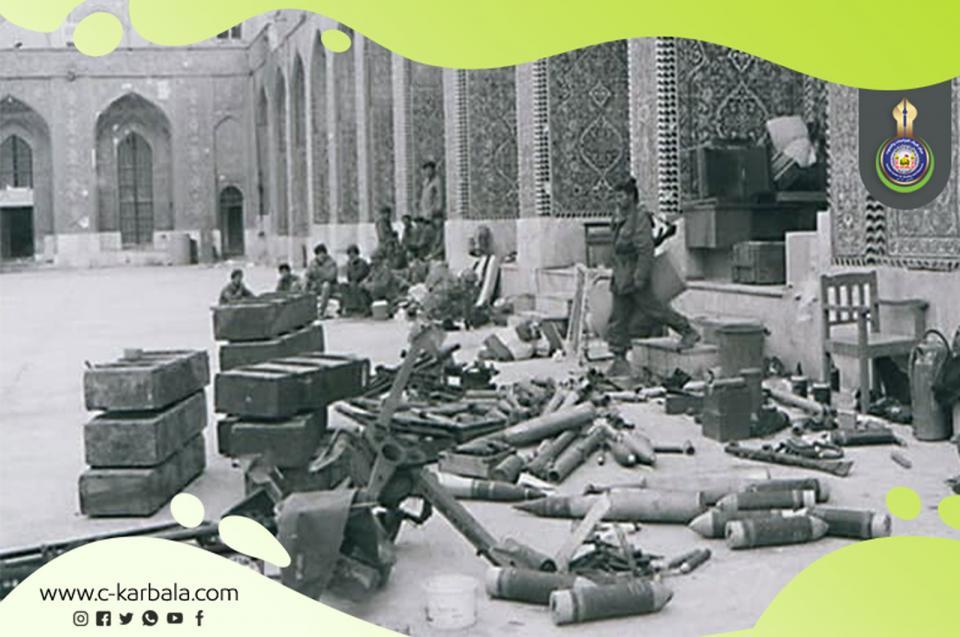Copyright June 1992 by Human Rights Watch
All rights reserved.
Printed in the United States of America.
Library of Congress Card Catalog Number: 92-72351
ISBN 1-56432-069-3
Al-Najaf and Karbala: Punishing the Shi'a
Post-uprising repression has been particularly harsh in the two holy Shi'a holy cities of al-Najaf and Karbala. Since the uprising, religious institutions and prominent clerical families have been targeted in a campaign to subdue Shi'a opposition, which Saddam is thought to view as the greatest potential popular threat to his rule. Unlike the Kurds, whose political aspirations mainly concern the region in which they are in the majority, the Shi'a opposition movements have long sought to install an Islamic government in Baghdad. The Shi'a account for an estimated 55 percent of Iraq's population.
Representatives of Iraq's Shi'a community have charged that since the uprising the Iraqi regime has targeted Shi'a cultural and nonpolitical institutions in an attempt to destroy the fabric of Shi'a society. These attacks were part of what they called a campaign of "revenge on a massive scale" in southern Iraq.
Many of the Shi'a shrines, sites and institutions of al-Najaf and Karbala were damaged by shelling during the uprising. Several were later demolished or closed. A London Times correspondent visiting Karbala in late April 1991 found a demolition program in full swing around the shrines of Hussein and Abbas, designed to create "a sanitary zone of concrete" around two of the holiest shrines of the Shi'a faith:
Entire buildings flanking a central boulevard linking the two mosques had been reduced to mounds of rubble since I had visited ten days earlier....The official explanation is that the area is being upgraded and will be turned into a plaza flanked by high-rise buildings and shops.
When El País correspondent Angeles Espinosa toured the ruins around the two shrines one month later, journalists disingenuously asked officials whether the damage had occurred during the Allied bombing or the uprising:
"No, this zone was dynamited by the government in order to renovate it," the official accompanying us replied without a trace of shame.
The three official reasons for this massive demolition of buildings is that they were very old, they were damaged during the recent revolt, and there is a plan under way to give the city a facelift. However, when this reporter visited Karbala last year, neither the broad pedestrian mall that connects the two shrines, nor what surrounded it, were in ruins.
Nor does it seem that the beautification of the heart of Shi'a Islam would be an urgent necessity at a moment when the country was going through grave economic difficulties.
The impression is that...the army has knocked down the buildings to crush the resistance.
One year later, the damage inflicted during the uprising to the shrines of Abbas and Hussein has been repaired, but, as Patrick Cockburn wrote during a recent visit, "the hasty restoration only emphasizes the extent of the damage." The rubble that surrounded the shrines after the uprising has been cleared away, but the marketplace has not been rebuilt and the shrines stand in a vast "waste ground."
Compared to Karbala, the program of demolition in al-Najaf was, according to Yousif al-Khoei of the al-Khoei Foundation, "relatively confined to religious centers, acres of Shi'a cemeteries in Wadi al-Salaam, and homes of people suspected to have taken part in the uprising." The Imam Ali, Baqee'a, Morad, Sami Kirmasha, Imam Sadiq, and Kuwait mosques are among the religious buildings in al-Najaf that the government has demolished since the uprising, al-Khoei said.
The U.N. Special Rapporteur visited al-Najaf in January 1992 and noted that in the Wadi al-Salaam cemetery, where Shi'a pilgrims from as far away as India and Afghanistan have been buried for over one thousand years,...a highway is being constructed over the graves in what is alleged to be an act of deliberate desecration; leaders of the community have not been consulted. In addition, the thousand-year-old Houza, the Shi'a university, was closed along with many other schools, private as well as religious, at al-Najaf, while libraries with manuscripts that constituted part of the Islamic tradition were destroyed.
The Special Rapporteur also stated that the number of clergy at al-Najaf had been reduced from eight or nine thousand twenty years ago to two thousand 10 years later, and 800 before the uprisings of 1991.
It is alleged that virtually all of them are now under arrest or disappeared, as the Baath regime is seeking to destroy Shi'a culture by wiping out its traditional leaders of the ulema [learned] class.
Among those reportedly arrested in March during the suppression of the uprising were some 105 relatives, staff, religious students and some senior clerics associated with the Grand Ayatollah al-Khoei. Except for one individual who was released, their fate remains unknown to this day (see above, first section of this chapter).
As in Kirkuk, monitoring the ongoing repression in Karbala or al-Najaf is difficult. The U.N. has no office in either city, and the few foreigners who have been able to visit are closely watched by the government and unable to converse freely with local residents.

